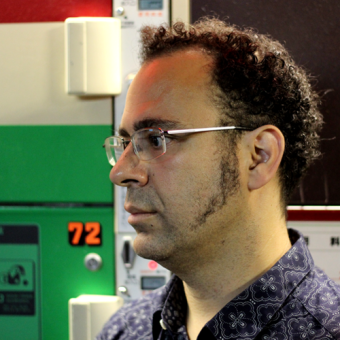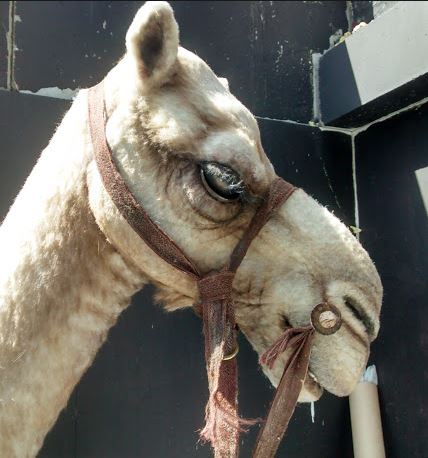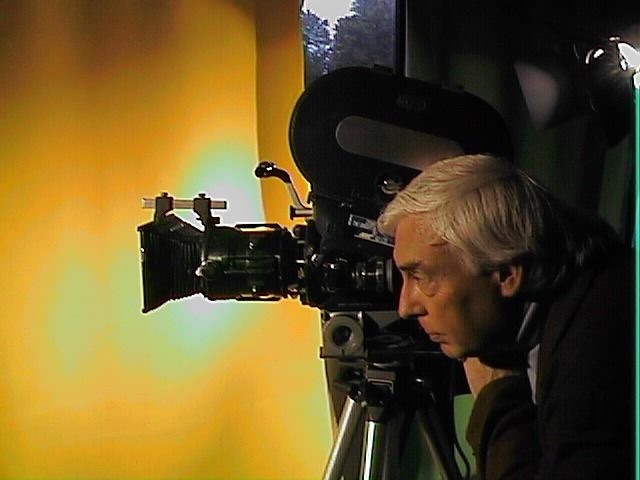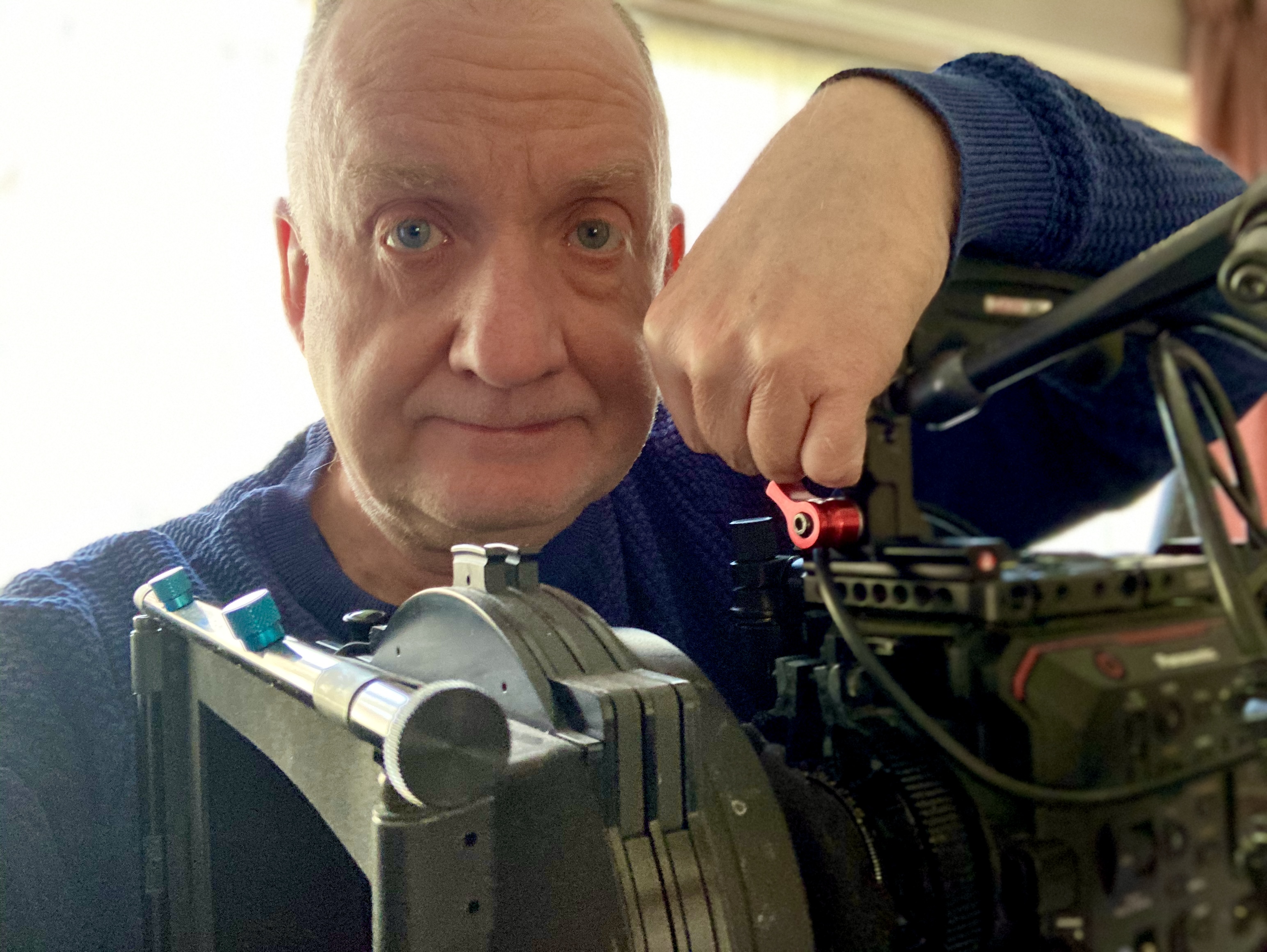ASK & DISCUSS
INDEXShooting on Super 16 in the UK
Only members can post or respond to topics. LOGIN
Not a member of SP? JOIN or FIND OUT MORE
9 years, 8 months ago - Rudolf Kremers
Whoa I did not mean to submit that just yet... :-)
Right, so.... I utterly love the aesthetic and philosophy of film. I'm a decent film stills photographer and after shooting my recent DSLR short with vintage lenses I really feel empowered to shoot a short on Super 16.
So I bought a lovely hand-cranked Russian Kragnagorsk 3 camera, modded to take 100ft rolls of super 16.
It takes M42 mount lenses, and I already have a vast collection of those, so I should be good to go in that regard. However, as a newbie to shooting on super 16 I was hoping for tips on the following:
-Where can I get good deals on 100ft S16 in the UK?
-What is a good but affordable lab for printing and scanning? I'm happy to deal with telecine in other countries if needed
-Any other related subject matter people feel they can advice me on :-)
Many thanks!!
Rudolf
9 years, 8 months ago - Paddy Robinson-Griffin
A quick search for 'film lab london' will find you a few options, call them up and ask for a deal?
9 years, 8 months ago - Mark Wiggins
There are only two labs in the UK. IDailes and Cinelabs. Both very friendly and helpful and will do deals for low budget. There are really only two places to go for stock. One is Kodak and the other is Frame 24. Frame 24 are worth talking to as they have just announced a deal with both IDailies and Cinelabs regarding 16mm.
9 years, 8 months ago - Rudolf Kremers
Ok thanks everybody. Had anybody dealt with foreign labs at all? I don't mind a bit of postage for good results :-)
Any general advice for shooting on Super 16?
9 years, 8 months ago - John Lubran
It's been a few years since we shot anything on film but a big lesson remains fixed in my head about it. We were shooting a low budget full length feature on super 16. A batch of dailies came back soft. After exhaustive analysis of our kit and methodologies we were certain that it was the lab at fault. The lab fought tooth and nail in denial but eventually had to admit liability. It was not a pleasant experience, it was an expensive and time costly hassle, let alone the emotional stress. At the time, about ten years ago, I don't know how many apparently respectable labs there were in London but I'm not confident that we would have prevailed if we'd been dealing with a cut price outfit abroad.
Catastrophic failures of any entity one has invested in ought always be prepared for when doing anything significant. Now that filmic 4K and superb post production grading has reached such high and cost effective standards I'm increasingly unsure whether the asthetic virtues of any film format less than s35 really are necessary?
9 years, 8 months ago - Rudolf Kremers
Thanks!
Yeah I have no problem understanding the advantages of digital, and I shoot on digital as well. However, for many personal and aesthetic reasons I do want to shoot on film, but realistically I am keeping it to shorts for now.
Cost isn't a huuuge worry for me, as I don't intend to shoot with a big crew, or need tons and tons of footage, and the cameras themselves are amazingly cheap these days. :-)
9 years, 8 months ago - Mark Wiggins
Did you ask the lab to redo the rushes? Or even redo one of the rolls to see if it was still soft. If the lab were at fault the neg would still be sharp so no real problem, you have lost nothing. You can always have the neg sent elsewhere for telecine.
If the neg is soft, then it is not the lab at fault. The sharpness or softness of the neg is determined at the point of exposure, before it reaches the lab, and will be down to either a lens, camera or Focus Puller problem.
I assume you tested all the camera gear before the shoot and shot tests.
9 years, 8 months ago - John Lubran
Thanks Mark all very true. As I wrote though, the lab accepted blame for the soft dailies and the neg proved to be fine. However it took three days to get it sorted in the middle of a full set, cast and crew on a hired location. Exposed film was couriered nearly 200 miles the daily to the lab with the processed dailies from the previous day sent back to the location. Hence Dailies; Hence the financial and emotional cost. Because of the possible further risk, waiting to discover exactly where the error was meant not proceeding with camera departments set up in the interim. A tough call on a limited and finite budget.
9 years, 8 months ago - Mark Wiggins
The lab situation is a lot better now than it was back then; film is on a bit of a resurgance.
Sounds to me like you had a lab problem as opposed to shooting on film problem. You said yourself, the neg was fine and eveything else must have worked for this to be so.
You shouldn't let one bad experience with a lab put you off shooting on film. I have countless horror stories about shooting on digital: Cameras continually crashing, bits falling off cameras, connectors braking, corrupted data. Many of these problems, also, took days to sort out. Problems on shoots happen, problems that can take ages to sort out, irrespective of whether you are shooting on film or digital. You cannot blame the medium you are shooting on for human error, bad equipment etc. These things just happen regardless of what format you are shooting on. It is not the format's fault; so don't blame it.
9 years, 8 months ago - John Lubran
To be fair I've not blamed any format. Of course there's no way to be 100% certain of avoiding human errors or acts of God. The point I'm making is that because of the potential for such errors, and where one is at consequential risk of even greater impact upon well being than the initial cause itself, it's wise to factor the possibility into ones plan from the outset.
I'm so very happy that film is making a bit of a comeback, not unlike the revival of vinyl records in music. However these are niche comebacks and are never going to make an impact on digital except for and until s35 has been well and truly trounced by digital formats of 8K and more such as the already existing, in the R & D labs, 30+K. This is the reality, film has long reached its zenith whereas the zenith for digital technology is no where in sight. With digital we've not seen anything yet! The only way that film might compete is with very large frame formats but the cellulose industry will have to invent massively more cost effective processing to be viable. Right now though I just can't see how s16 can be a justified, even in terms of aesthetic taste, when readily available low cost software and full frame cameras can so closely imitate even better s16. Having said that, it will be a sad day when even the best of film finally becomes obsolete. I still get my beautiful 35m Canon stills cameras out and consider sadly how they are unlikely to ever take another photo. It'll be down to preservation societies, like the ones that keep steam railways going, to ensure that at least some vestige of a great age are preserved for posterity.
9 years, 8 months ago - Paddy Robinson-Griffin
Celluloid has its place in an unexpected place - archive!
The useful life of most domestic burn DVD's is a few years, archive quality maybe 100 BUT who's going to make readers in 100 years? The format is almost dead already. Let's say a future archeologist discovers how to read a DVD as a series of pits on a disc, and somehow even understands the filesystem... Well how many people here could assemble a bunch of binary into a bitmap, let alone an MPEG2 steam with MP3 encoded audio. Let alone have a working TV with SCART socket.
The same goes for every other format, some programmes are effectively lost already even if they do exist on 2" quad tape, or hi-band umatic, and we haven't had a discontinuity of civilisation. If we had, so much would be gone.
However, a 35mm print kept well will not only last as close to forever as we can imagine, but also be fairly simple for someone smart to work out and project from base principles. That's why 'The Red Shoes', when restored, was archived onto 35mm, despite all of the restoration being in the digital domain.
9 years, 8 months ago - John Lubran
A very good point Paddy and I hope that's another thing that might help keep film alive. What's also likely to occur is other forms of digital archiving of a more robust type than both current hard disk and film. I imagine that DVD's aren't being used for definitive archiving because they're too fragile. I seem to remember a talk,on the telly, more than a year ago, between academics, suggesting the possibility of imprinting code into things like granite and metals. Advanced research into a sort of hybrid digital-analogue format involving water based molecular level platforms presents the intriguing notion of seamlessly overlapping bytes of data that in media terms offer infinite latitude in respect of colour, contrast and audio spectrum. The thing about technology is that today's achievements are tomorrows primitive curiosities. Apart from this old relic writing this, our premises are full of them and are mostly still less than twenty five years old, which is absolutely nothing in archaeological terms. Goodness knows what sort of technologies future archaeologists will unearth even just a century hence. My daughter just gave me £25 drone, the size of a box of matches, fitted with a fixed 720p camera recording over fifteen minutes of very watchable, even if less than broadcast quality, able to fly for up to about a quarter of an hour on a 90 minute charge. It would have seemed like something out of Star Wars just a decade ago and now it's a cheap toy!
'The times they are a changing' Exponentially!
9 years, 8 months ago - Mark Wiggins
Yes, the film revival is niche. Problems occure regardless of whether you are shooting film or digital. A producer who does not prepare for this is asking for trouble.
Paddy makes a good point about archive. Nothing can compete with archiving on film, where you essentially have three negs, one for each primaray colour.
S16 does have its place. "The Walking Dead" is famously shot on S16 as are some other well known shows.
Also, speaking as a Camera tech, I'd rather take an Arri SRII into the desert, or up a mountain or into the jungle, than a Red Dragon, or Digital Bolex to give a more comparable comparason.
9 years, 8 months ago - Rudolf Kremers
It's very hard not to trigger a film/vs digital discussion it seems ;-)
Anyway, I will shoot on super 16, I am happy with that choice, but want to make sure I get the best results when I do.
So, any specific advice is very much appreciated.
Thanks!
9 years, 8 months ago - Mark Wiggins
You mentioned foreign labs earlier. If you are thinking of shooting abroad, speak to a lab here and get their advice. Labs seem to be disappearing and popping up all the time at the moment.
Have you got a lot of experience shooting film, cine or stills? If not, collaborate with a DOP. If you don't know what you are doing with film you can make some very expensive mistakes.
9 years, 8 months ago - Rudolf Kremers
I have a lot of experience shooting stills on various film formats, so I'm not overly intimidated by that aspect. I will shoot in the UK, but was only asking about foreign labs in case there are really good deals to be done, OR of there are simply better options out there.
I don't want to overstate it, but I will likely shoot MOS for narrative shorts and promos for my video games.
(I run a video game company)
All of this will be fairly low budget.
9 years, 8 months ago - Mark Wiggins
First thing to do is set up a relationship with a lab, so they know you and you know them. They can offer a lot of advice.
9 years, 8 months ago - John Lubran
'Don't have experience of Red Dragon but over the last thirty years we've had people filming on both analogue video and digital tape and hard disk formats in most of the extremes this planet has to offer including polar, deserts, humid jungles, far out at sea in very small boats, on top of very big mountains (23,000 ft), hanging off microlights at 7,000 feet etc.,etc. Hanging out of a Russian military helicopter with a Z1 wrapped in the armour of a pillow slip in the Sudan in a sand storm of ground effect. I can't recall a single failure that wasn't down to human error. Auto shut down when cameras have detected condensation or extreme over heating has occurred but we've always had an air free plastic bag and a second camera on standby to allow the other to rest for half an hour before bouncing back to service.
It's a further benefit of digital that there's no limit to how much one may shoot, which for factual and documentary is often a huge benefit, especially now that we can do this in 4K. I've been amazed by the robustness of what's been for us mostly Sony kit, way beyond Sony's own specs.
It's not an exact conversion equation between proverbial apples and oranges but as a widely accepted rule of thumb it's worth noting that s16 is equivalent to about 2K and s35 to about 5K. Films traditionally greater contrast and colour latitude over video is fast diminishing and with the application of appropriate lenses, filters and online grading, somewhat academic. The choice has become a narrow matter of aesthetics, the subjective pallet, and even here there's evidence of a shift in taste towards the look of digital among younger audiences.
With regard to the whole process of production from filming through post production and distribution, digital is quicker, easier and cheaper. There's no waiting to see what you've got; even video assist can't help with that. It's ironic that film now needs to be converted to digital for both domestic and theatrical screening.
Much of the traditional discipline taught about camera work have their roots in the risks and demands of cellulose and the fact that film can't provide the same absolute confidence on location of the 'what you see is what you get' provided by digital, no need for the time dragging dailies or even 'weeklies' if you're in a remote location. This has required more rigid discipline and risk aversion in methodology when shooting on film. Purists insist that this is always a good thing, but in my view it's not always ideal and can be quite obstructive. The film camera person needs to be as much of a technician as they are artists. The digital camera person can, with a 'lightness of spirit' break glass ceilings, push envelopes and 'beneficially' waste footage without regard for stock or cost.
Having said all that, film can be absolutely gorgeous.
'You pays your money and takes your choice!'
9 years, 8 months ago - Paddy Robinson-Griffin
In terms of sheer 'resolution', I'd suggest analogue is somewhere comfortably south of digital in pretty much every dimension now.
'Good' film stock had a resolution of 50lp/mm (line pairs per mm - ie a shot of a board with lines could be resolved from grey at around 50 black and white pairs of lines per mm of film stock) - and as 35mm film was appx 22-24mm wide (after sprocket holes and audio), then 24mm x 50 pairs is 2400 pixels ie not far above 2k resolution. Maybe you spend a mint on extremely good stock, shoot at the slowest speed posible, etc you might be looking at 4k. 5k as an absolute oultlier, the best of the best, freshest, most premium stock, sharpest glassware, razor sharp focus, etc.
THAT SAID, Bayerised digital sensors aren't as straightforward either... :-$
9 years, 8 months ago - Mark Wiggins
Er. Its not all about resolution. Colour depth, dynamic range etc also play apart. Although with cameras like the Alexa/Amira family this isn't so much of a problem. A couple of years ago, a shot a promo where the director, unknown to me, decided that she needed some extra footage (after the shoot had taken place) so went out and shot this footage with her 5D. I only knew this when I saw the edited finished result. Needless to say, the two don't match at all.
My comment about the Arri SRII was down to the fact that, if something went wrong with the camera, it could be fixed there and then as the camera is mechanical. Something goes wrong with a dragon and its a whole other business.
9 years, 8 months ago - John Lubran
That's an interesting analysis Paddy and I don't doubt you for one second. I got my figures from a published source that seemed credible at the time, perhaps a couple of years ago. Making qualitative comparisons between film and digital, as Mark suggests, is not quite as simple as measuring resolution alone and I can easily imagine that some analysts use additional criteria when trying to offer some sort of qualitative comparisons that might assert that s35 has a 'qualitative' comparison to digital 5K; it really is an analogue apples and digital oranges sort of difference. Nevertheless, based on Paddy's figures I think it even further questions the existence of s16, when digital can easily simulate s16 aesthetically, if required to, only without s16's considerable disadvantages.
Getting back to Rudolf's original question where he writes of not only the aesthetics but also the "philosophy" and he's bought a Russian hand cranker to boot. I don't think Rudolf's plan has so much to do with whether or not he could achieve the look he wants with digital as much as the pleasure he personally derives from that classical process. Taking pleasure from the process is enough of a valid reason in itself but it won't wash, in my opinion, to justify the hassle and cost on any other grounds, despite the several features and American TV series still being shot on s16. I suspect that those projects are driven by business reasons unrelated to aesthetics and process, reasons that are unlikely to be emphasised by their spokes persons. The 'Emperors New Clothes' perhaps?
9 years, 8 months ago - Paddy Robinson-Griffin
John, absolutely agree that pleasure is a splendid reason to hand crank in a legacy format - the fun and romance aren't commercially measurable but that doesn't make them valueless!
I understand where you and Mark come from with saturation and dynamic range and I actually completely agree. Digital, however, marches onwards, ever improving, and I can't say when I watched Skyfall that I wished (as a viewer) that they'd shot it with a denser colour palette, for instance. And RED (which I'm personally less fond of) have their 'HDR mode' thingy, which might be worth turning on in exceptional circumstances. Less of an issue if a shot is well lit and camera well operated. I think a part of that is the development of brighter glassware too - a lot of movies had to shoot day for night because they couldn't get enough light onto previous generations of emulsion, maybe those couple of extra stops would have helped?!
I'm neither pro one not anti the other, Spielberg still shoots on 35mm and good for him. He can afford to. For almost everyone else, trying to get a few hundred grand onto the big screen necessitates some compromises, and it's a simple decision whether to pay £1/foot for stock, lab, sync and edge, edit suite, optical soundtrack, conforming and prints (before going into a digital screen anyway), or not. Digital is 'good enough' in those cases. 28 Days Later didn't pull the punters for its dynamic range or screen resolution, but for its story. Get the story right and the format is irrelevant.





